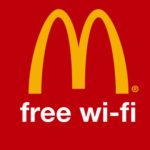Data extraction tools vary significantly in their functionality and versatility. So do the requirements of organizations or teams that use them. Each has specific needs that certain tools serve better than others. The tool’s features must align with the functions for which it is intended to be used. This requires understanding both the tool and the needs.
This blog provides you with insights on how to choose the right data extraction tool. This includes things you need to do before picking up a tool and factors and features you need to consider.
How to choose the right data extraction tool
The below steps lay the foundation for selecting the right tool.
Define the data scope of data extraction needs
You can choose a data extraction tool well only if you know what you will use it for. Consider factors such as:
Source types: Determine the types of sources you’ll extract data from. For example, websites, documents (PDFs, scanned images, and texts), databases, spool files, or IoT devices.
Data format: Determine if the data is structured (CSV files, database tables), semi-structured (XML, JSON), or unstructured (text, emails).
Frequency and volume: Evaluate how often you’ll extract data and the amount to be extracted. This impacts your needs for automation and scalability.
Set clear goals and expectations
After determining the source, types, or volume of data you’ll be extracting, the next step is clearly defining what you want the tool to achieve. Is it saving time and money? Or enhancing data accuracy? Or increasing processing speed?
It is also essential to consider what you intend to use the extracted data for. Depending on your objective and how it might evolve, the choice of tool will differ.
Prioritize essential features
Not all features that a tool provides are equally relevant to every project. Nor do all tools have the same features or are equally suitable for a given extraction need. Your choice of tool should lean toward those that excel in those tasks you’d be using it for.
Prioritize a feature or a set of features particular tools offer that are most pertinent to your requirement and consider those. Distinguish between features you must have and those that are good but not vital.
Consider both immediate and long-term needs
When choosing a data extraction tool, concentrating only on immediate needs can make one lose focus on future needs. This can cause potential roadblocks as business and data extraction demands evolve.
Consider both short-term and long-term needs. A tool that is adaptable to different data types and sources and scalable according to data volume is ideal.
Test before you invest
The best way to know if a data extraction tool suits you is to use it. Test the tool with your specific data sources and see how it performs. Assess the tool’s ease of use, functionality, and suitability for your particular needs.
Leverage free trials if available. Else, test a pilot project. Don’t commit solely based on vendor demos or online reviews and recommendations.
Also Read: PDF Drive: Accessing & Utilizing the Largest Online eBooks Library
Factors to consider while choosing a data extraction tool
There are lots of factors you need to consider in a data extraction tool. While considering these factors, keep your business requirements at the forefront.
Data source compatibility
The data extraction tool should handle diverse data sources and support structured as well as unstructured data. Since your data requirements may evolve, ensure that it can adapt to the changing needs and can handle custom data types and sources.
Data sources, especially online ones, may change, causing the tool to malfunction or the extracted data to be inconsistent. This could break data pipelines and render the extraction process ineffective. So, the tool should evolve and adapt to changes in the data sources.
Integration capability
Integration connects the data with your operations. The ability to seamlessly integrate and synchronize extracted data with existing systems is essential. So, ensure the data extraction tool offers integration capabilities with data warehouses, business intelligence tools, customer management systems, or custom applications.
This could involve pre-built connectors, APIS, or versatile data export options in various formats such as CSV and JSON.
Data security and compliance
Choose a tool with a strong commitment to data security and compliance with relevant data privacy regulations like GDPR and HIPAA. Ensure that the tool employs robust encryption for data and utilizes secure data storage practices.
This is especially critical if the tool works in the cloud. Also, verify if it provides adequate access controls and auditing measures to safeguard sensitive data.
AI and automation capabilities
An artificially intelligent data extraction tool can significantly improve accuracy as well as reduce the need for manual intervention. If you plan to extract data from images, scanned documents, or PDFs, assess the tool’s optical character recognition (OCR) capabilities.
Evaluate its accuracy, language support, and ability to handle various document layouts.
If your data extraction needs are repetitive and time-sensitive, automation features become crucial. Look for tools that allow you to schedule extractions at regular intervals.
Data transformation and cleaning
Data extraction is not an isolated process. Cleaning the extracted data is an intrinsic part of extraction and is followed by transformation. Consider tools that can clean and normalize extracted data.
This includes handling missing values, formatting data types consistently (e.g., dates, currencies), or removing duplicates.
The tool should also provide options for cleaning data according to rules defined by the user—for example, eliminating age that has a negative value.
Error handling
No tool is failsafe. How a tool handles errors and guides the user in fixing them is an important factor. When extracting a large amount of data and the process fails midway, it can result in wasting a lot of time and resources.
Meaningful error messages, recovery options, and issue logs can thus be handy in such cases. Besides diagnostic features, preventive features such as real-time alerts on potential issues can be highly useful.
Also Read: How to Convert HEIC to JPG Easily and Quickly
End note
As you consider data extraction tools for your business, focus on your specific goals and needs. Look for a tool that offers easy integration, scalability, and support for the data types you work with. Aim for an intuitive interface that doesn’t require extensive training.
Most importantly, choose a solution that helps you efficiently access, manipulate, and analyze your data. With the right extraction tool, your business can make the most of your data assets.

We are a team of enthusiastic people who want to share our experience, knowledge and enterprise with the world. We love what we do and we hope you will too!. We pride ourselves on being the global leader in developing Techspurblog as a technology blog, which can create original content.






